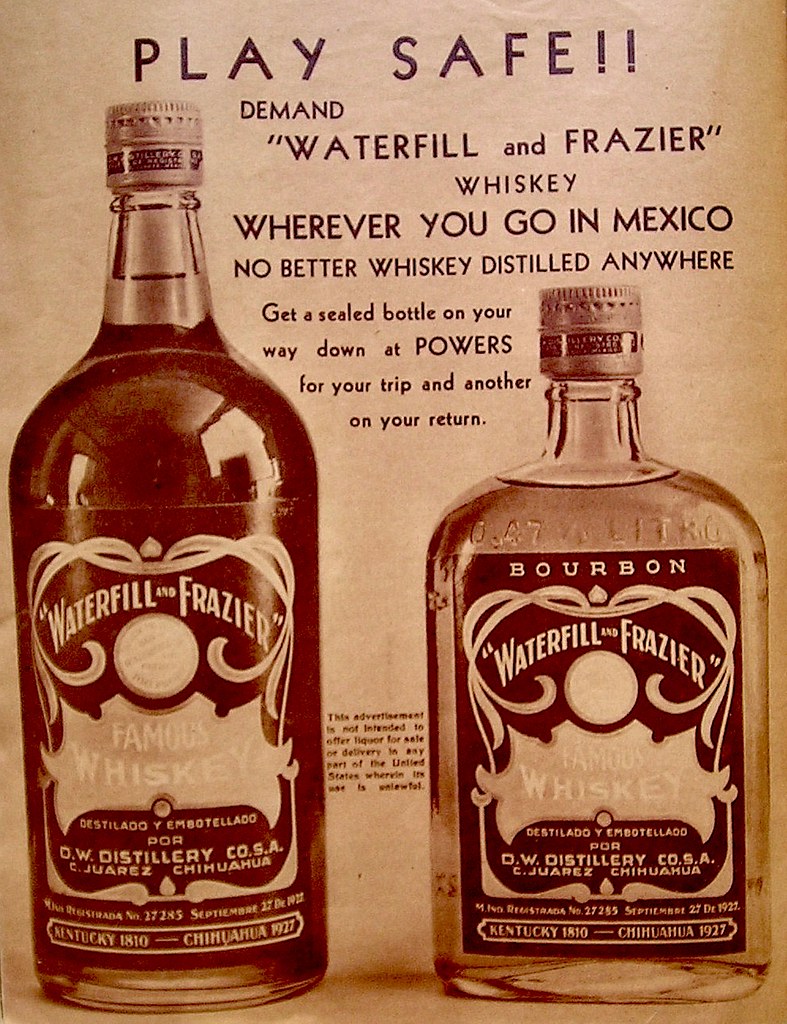When prohibition hit America, many distillers went underground, hoping to continue distilling whiskey illegally. However, some distillers rose to the challenge and kept one step ahead of the government, ensuring they could continue to produce whiskey legally. One such distiller was Mary Dowling, head of Waterfill & Frazier distillery.
Born Mary Murphy in 1859, Mary got her start in whiskey through her husband, John Dowling. John was partner of a distillery in Anderson County, Kentucky that was owned by J.M Waterfill and G. G. Frazier. John joined the two men in ownership before eventually increasing his share to take over the full business by the early 1900’s. The distillery still operated under the name ‘Waterfill and Frazier’ and continued to do so after Mary inherited the company after John’s death.
Now the head of Waterfill and Frazier, Mary steered the distillery through two decades of success before prohibition hit. However, with the introduction of prohibition things began to look bleak. She was unable to attain a license to produce whiskey for ‘medicinal purposes’ so instead she resorted to underground operations. The illegal operations worked for 4 years until she was caught in a ‘sting’ operation with 478 sacks of whiskey in her basement, each sack containing 12 quarts of whiskey.
Mary was arrested and prosecuted for possessing and selling alcohol. It is only though a stroke of fate that she escaped jail time – the court stenographer at her trail died and the notes he had left were unreadable. A Circut Court found this sufficient reason to throw out the conviction and Mary was allowed to walk free.
However, Mary’s brush with the law convinced her she needed to find a way to make and sell whiskey above board. So Mary made an impossible decision.
In 1926, with the help of Joseph Beam, Mary decided to pack up and move Waterfill and Frazier to Juarez, Mexico to continue to produce whiskey legally. There, they could make whiskey without fear of American authorities since they were simply the distillers; if someone decided to smuggle Waterfill and Frazier whiskey across the boarder, that was the smuggler’s issue, not Mary’s!

The Juarez operation of Waterfill and Frazier was successful and primarily supplied Mexico and South and Central America with whiskey. However, Mary also kept America supplied with a steady stream of bourbon throughout prohibition. No one knows how, but she found a way to get her Mexico made bourbon to American consumers.
Mary died in 1930, just four years short of the Repeal of prohibition. However, her legacy lives on in other ways. The success in American markets of her Mexican made bourbon is part of the reason the United State Congress in 1964 made bourbon a geographically protected designation. American bourbon producers were not pleased with competition from Mary’s Mexico based distillery and so started to petition the government for special protections. Though the regulations came in decades after her death, it is a testament to the success Waterfill and Frazier enjoyed because of Mary’s smart management.
Sources:
Jack Sullivan, “How Mary Dowling Outwitted National Prohibition” (2014).
Fred Minnick, Whiskey Women (2013).